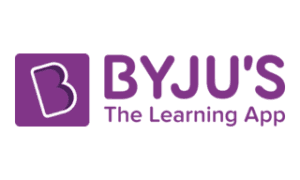Midoo AI is an AI-powered language learning agent designed to help users learn new languages efficiently. It offers a personalized and interactive learning experience that adapts to each learner’s needs. This review explains the features of Midoo AI, how it works, and how it compares to other AI language tutors.
Midoo–An AI learning agent
Midoo AI is an artificial intelligence learning assistant focused on language education. Unlike traditional apps with fixed lessons, Midoo uses AI technology to customize learning paths. It evaluates your current language level and creates study plans suited to your strengths and weaknesses. The AI agent guides you through exercises and conversations to improve your language skills step by step.
Main Features of Midoo AI
Personalized Study Plan
Midoo AI begins with an assessment of your language skills. Based on this, it generates a personalized study plan tailored to your needs. The AI selects content that matches your current level and learning goals. This approach saves time by focusing on what you need to learn most.
Interactive Speaking Practice
Speaking is an essential part of language learning. Midoo AI allows you to practice speaking through conversations with the AI. It listens to your pronunciation and gives corrections. This helps you improve your speaking fluency and confidence over time.
Real-Time Feedback
Midoo AI provides immediate feedback on your grammar, vocabulary, and pronunciation. When you make mistakes, the AI points them out instantly. This helps you understand errors clearly and correct them quickly.
Multiple Practice Modes
Midoo AI offers various learning modes including role-play, sentence building, vocabulary drills, and listening exercises. These options keep the learning process diverse and engaging. It covers different aspects of language skills for a well-rounded experience.
Progress Tracking
Midoo AI monitors your progress and shows detailed reports. You can see how much you have improved and which areas need more attention. Tracking progress helps maintain motivation and focus during your learning journey.
How Midoo AI Works: A Three-Stage Learning Framework
Midoo AI positions itself not as a collection of isolated learning features, but as an integrated AI agent that supports the learner across the entire learning cycle. It operates through three primary functional roles, each aligned with a different phase of the user’s experience: learning design, real-time interaction, and long-term support.
Learning Design: Adaptive Plan Construction Before Learning Begins
At the initial stage—before structured learning even begins—Midoo functions as a personalized curriculum constructor.
Traditional “personalization” in language learning apps typically refers to allowing the user to select from a predefined set of learning paths. Midoo differs in that it attempts to generate a tailored study plan based on the learner’s individual context and learning history.
From the moment of account registration, the agent begins collecting signals—such as stated goals (e.g., an upcoming business trip), previous performance, and recurring language issues (e.g., frequent errors in past tense). These inputs are used to infer the learner’s needs and propose targeted interventions.
Rather than directing the user to a generic travel module, Midoo may surface prompts related to previously discussed trips or past mistakes in grammar. This reflects a shift from fixed course design to dynamic, learner-specific planning. The process relies on continuous user modeling and decision-making at the system level, rather than manual selection by the learner.
In-Session Role: Real-Time Dialogue and Context Generation
During active learning sessions, Midoo shifts from curriculum planning to contextual interaction generation. It operates as a scenario engine capable of generating custom dialogues and role-play tasks based on user prompts and language proficiency level.
For example, a user request such as “I want to talk about anime with a friend” does not trigger a static lesson or pre-written dialogue. Instead, Midoo dynamically constructs a fictional interaction—for instance, a conversation set in an Akihabara figure shop—tailored to the learner’s vocabulary knowledge and fluency limitations.
The interaction is not fixed in structure. The AI agent adjusts difficulty in real time based on user responses. If the learner hesitates or makes frequent errors, it simplifies language and offers guided support. If the learner demonstrates fluency, the system introduces more complex expressions and culturally nuanced content.
This mechanism departs from traditional scripted learning flows. It uses adaptive dialogue generation and multi-turn contextual memory to create what the company refers to as “improvised scenarios.” In practice, it reflects an attempt to approximate natural conversation while maintaining pedagogical control.
Post-Session Continuity: Ambient Learning and Memory Support
The third phase begins after the formal learning session ends. Here, Midoo functions less as a tutor and more as an ongoing learning assistant.
Unlike conventional apps that require the learner to return and re-engage actively, Midoo includes a passive support module that monitors knowledge retention, content exposure, and user behavior over time.
It uses this data to push micro-learning content—such as short-form videos or comics—aligned with the user’s recent interests or activity history. For instance, after watching a sci-fi movie, the user may receive an English-language explanation of related scientific concepts. If the user is flagged as low in energy or less engaged, the content may shift to lightweight, low-effort materials.
Additionally, Midoo includes a spaced repetition component that predicts when the learner is likely to forget a specific concept. At these points, it may trigger review tasks or reminders. Rather than relying on fixed intervals, the system adjusts based on learner activity, past response accuracy, and decay modeling.
This design aims to extend the learning process beyond formal sessions and support a form of passive language exposure embedded in the user’s daily routine.
Comparison with Other AI Language Tutors
Midoo AI vs Speak AI
Speak AI is well-known for its speech recognition and pronunciation coaching. However, its lesson customization is limited. Midoo AI offers more comprehensive personalization and integrates speaking practice with grammar and vocabulary learning. This makes Midoo AI a more complete language tutor.
Midoo AI vs Loora AI
Loora AI focuses on chatbot-style conversations. It is good for practicing daily speaking but does not provide detailed feedback or personalized plans. Midoo AI uses advanced AI algorithms to customize lessons and provide specific corrections. This leads to faster and deeper learning.
Advantages Compared to Traditional Language Apps
Traditional apps often use fixed lesson paths that do not adapt to the learner’s progress. Midoo AI uses AI to dynamically adjust content and difficulty. It also provides interactive speaking practice with immediate feedback. These features help learners improve faster and more effectively.
Benefits of Using Midoo AI
● Efficient Learning
Personalized study plans prevent wasted time on unsuitable content. The AI focuses on your weak points and helps strengthen them.
● Better Speaking Skills
Regular speaking practice with AI feedback builds fluency and confidence. Midoo AI simulates real conversation scenarios, which prepares learners for actual communication.
● Flexible Learning
Midoo AI’s multiple practice modes allow users to learn according to their preferences. Whether you want to focus on listening, speaking, or vocabulary, the AI adapts to your goals.
● Motivation and Progress Tracking
Seeing clear progress reports encourages consistent learning. The AI adjusts the plan to keep you challenged but not overwhelmed.
Who Should Use Midoo AI?
Midoo AI is suitable for learners of all levels. Beginners can build a strong foundation with personalized guidance. Intermediate and advanced users benefit from targeted practice and detailed feedback. It is especially useful for those who want an interactive tutor that adapts to their learning style.



































